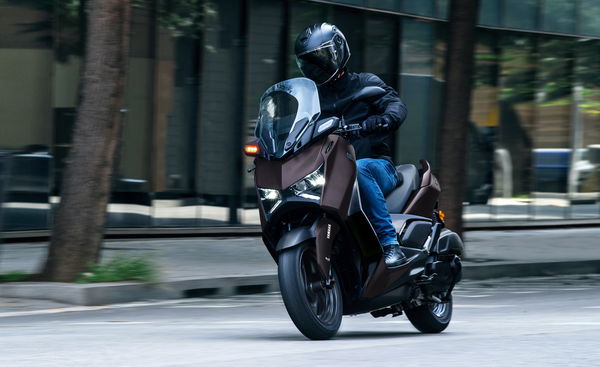Top 10 tips when buying a used bike
New to biking? Here's a head start with Visordown's guide to sifting out the garbage
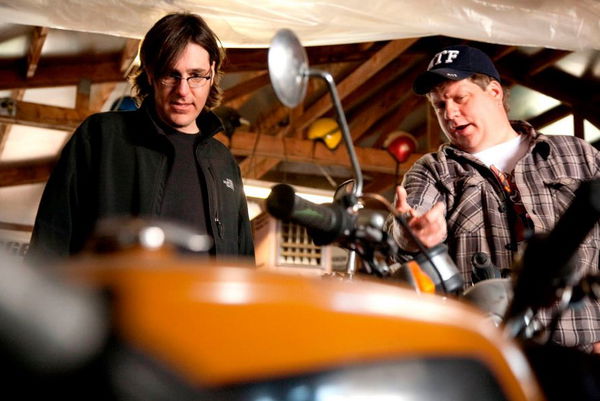

Learn as much as you can
THE SECONDHAND bike market can be an intimidating place for any motorcycle novice. Whether a rider's looking to buy their first machine from a dealer or a private seller, several simple steps should be followed to help avoid the chances of splashing out cash on a sub-standard motorcycle.
Ideally, your purchase should be in decent condition and free from corrosion. Go for the best model you can find - it's out there waiting for you. Set your standards high, rather than settling for something that's below par. Put in the effort and you'll probably be rewarded with a decent machine.
Know the market
Spend time researching details about the model of bike(s) in which you're interested. Scan the internet, do some research on owners' forums, read back issues of motorcycle magazines, ask questions on Visordown for things to check on the bike of your dreams. Check out our comprehensive bike reviews. Call your local authorised dealer for first-hand advice on the machine you're after. Keep a written record of all your findings for reference when you go to view.
Look at as many adverts as you can on the type of machine you want. Get a feel for the market value, the average mileage and the popular modifications. Become knowledgeable about what can go wrong; has they're been any factory recalls issued?
In short, become an expert on your chosen machine, so when you go to view you've got some idea of what to expect and stand less chance of being bamboozled by any waffle with which the owner may try baffling you.
Phone call
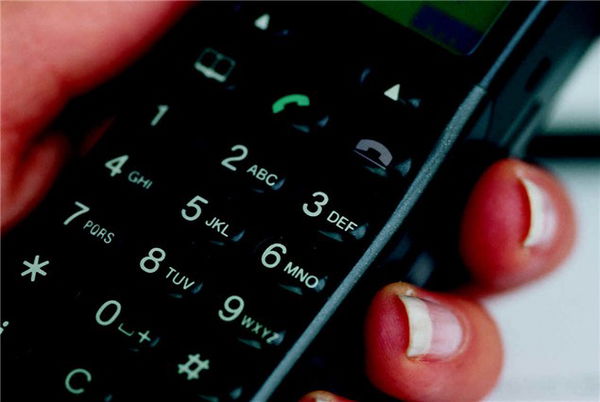
Ask lots of questions
HAVING SINGLED out the machines you wish to view (and we'd strongly suggest looking at more than one) call the owner with a list of questions, armed with the facts you've learned while swatting up on the type of bike you want.
Quick questions worth asking are:
Has it been crashed? If so, how badly?
How many owners? More owners means more chances for problems
Is it an official UK bike? Grey imports are worth less
Is there any finance outstanding? Do an HPI check
Does it have service history? Who carried out the work?
Any modifications? Are the original parts included in the sale?
A machine that's toppled over off its sidestand isn't necessarily a walk-away situation but a rebuilt write-off most definitely is.
Glean as much information as possible about the condition and history of the bike to avoid a wasted journey. If the bike turns out to be a complete dog then walk away.
Again, keep notes of all your findings for future reference.
Documents
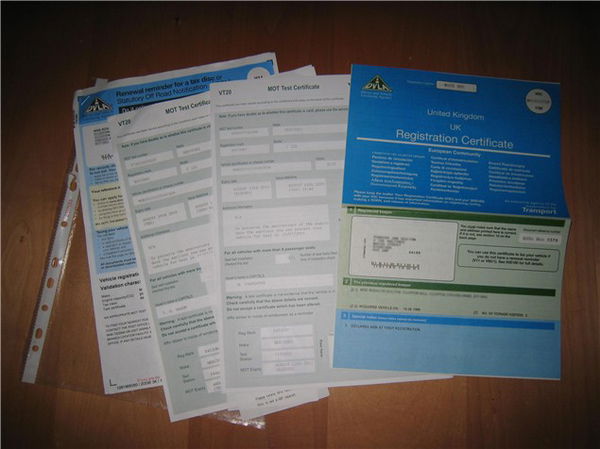
Check the documents
ON ARRIVAL - and after the usual pleasantries - check all the bike's documentation.
Engine and frame numbers should tally with the V5 registration document, which in turn should all tally with the owner and his/her address.
An MOT, if applicable, should be valid and preferably lengthy.
Is the bike taxed?
An HPI check can tell if the machine has outstanding finance or has been written off, however, it's no guarantee.
Nothing should be out of place. Accept no lame excuses. If the documents aren't there then leave, politely.
The walk round

Check it over - from a distance
The walk round
Always go to view in daylight hours in good weather or in a very well lit garage. Stand back and have a walk around the bike before moving in for a closer inspection. You're more likely to notice mismatched panels or a twisted subframe from a distance than standing six inches away.
Check the wheels are in line by asking someone to sit on the bike with the bars straight and then squat down ten feet in front or behind the machine to see if the front wheel lines up with the back. Use a plank if the owner has one to hand. It's a slightly crude method but worth doing.
Move in for a closer look. Is anything bent, scratched or missing? Have all the boltheads and screws been chewed by someone using cheap tools? If the answer's yes then make your excuses and leave. If the owner's asking for decent money then the machine should be of a decent standard.
Tyres, discs, chain and sprockets
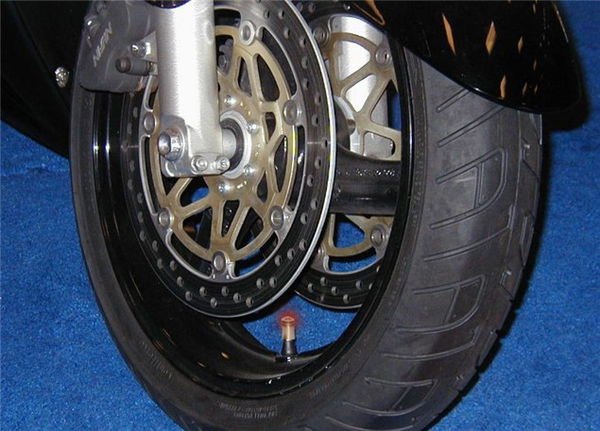
Check the consumables
Tyres, discs chain and sprockets
Check the condition of the tyres, discs, chain and sprockets (if fitted) as they're a good haggling point if they need replacing.
Depending on the type of bike, new tyres can cost up to £250 a pair. A chain and sprocket set could set you back £100 or more.
Chipped wheel rims usually means the bike's had numerous set of tyres, so be wary if the owner claims the machine's low mileage.
A slack, rusty chain and knackered tyres are an indication the bike's been treated badly.
The discs should be in good condition, not scored or warped. It's worth taking along a knowledgeable friend to inspect them if you're not sure what to look for.
Engine

Start it and listen
MOST MODERN motorcycle engines are extremely reliable, however, potential owners should always check for suspicious rattles and knocking noises. Also look for oil or coolant leaks, which could signal some developing problem.
Ask the owner to start the engine. Listen to the exhaust. Place your hand briefly over the end pipe (before it gets hot) to increase pressure in the system and check for any leaks.
Again, an experienced friend comes in handy at a time like this to confirm any suspicions are innocuous.
Ideally, the engine should be started from cold as any issues, like camchain rattles, can disappear once a motor's warmed up.
Head bearings
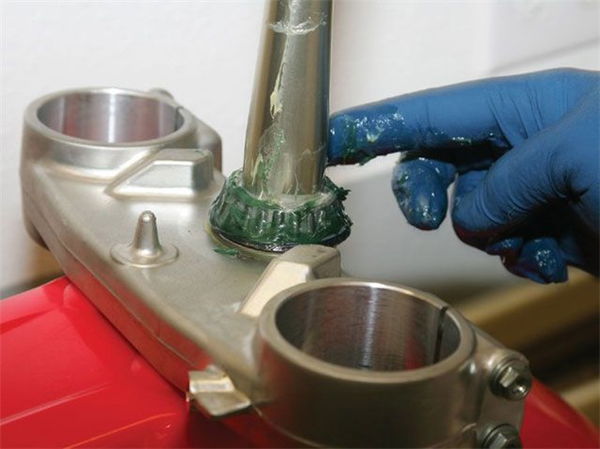
Worn head bearings can be replaced - at a cost
APPLY THE front brake and rock the bike to and fro. If you can feel or hear a knocking through the handlebars then the bike's head bearings may be worn or need replacing. Not a major job but this should have been checked already if the bike's got a full service history.
This is also a good time to check the fork seals. This is the area where the shiny bit of the fork leg disappears inside the main fork housing, or stanchion. Any leaks found here will need sorting before the bike's safe to ride, which will cost around £150 - £200, depending on the type of bike.
Electrics

Faulty wiring can be a nightmare
CHECK ALL the bike's electrics: Lights, indicators, console lights, horn sidestand cut-out and anything else that relies on the bike's electrical circuit.
Faulty wiring can be a pig to rectify (pun not intended). It could also be a sign the bike's been rebuilt at some point in its life.
If the bike's armed with a trip computer make sure all the buttons and functions work - they can cost a fortune to replace.
Finally, if the machine's armed with a security key, like Honda HISS, then make sure the spare's included in the deal. If you lose the original then it's a mega-expensive job to get it sorted.
The test ride

Be respectful as well as thorough
IF THE OWNER offers a test ride then make sure you're fully insured for the purpose. You may need to show proof via a cover note. Don't be surprised if the owner asks you to leave your car keys or a substantial deposit.
Find a suitable stretch of road to test the brakes and steering, as well as going through all the gears at least a couple of times. If you're a new rider then delegate this job to a trusting mate who knows what he's looking for and isn't a prat who'll cane the bike for all it's worth.
Finally, respect the owner's property. It's not your machine yet.
Haggling
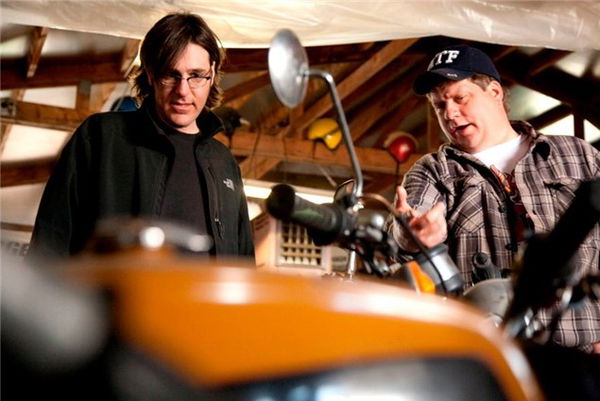
Be tactful, not rude
THERE ARE HUNDREDS of bikes on the secondhand market, so don't feel pressured into buying the first bike you see.
If you're happy with everything - you've checked all the bike's documentation etc., given it a thorough once-over and are satisfied it's the bike you want then it's time to proceed to the next stage: haggling.
Only haggle if you're 100 per cent happy with the machine and you know you definitely want it. No one likes a time-waster.
Be tactful. Owners are much more likely to knock a bit off the price if they like you. Rub them up the wrong way by slating their machine and they may just tell you to p*ss off. This is where your market research comes in handy: "I like the bike a lot but I think it's a little overpriced" is a far more constructive way to start negotiations.
Show you know your onions by explaining, fairly, why you think they should lower the price. Get out your notebook listing the other bikes you're planning to see. It shows you're serious and not a tyre kicker.
Above all, be prepared to walk away if you're not totally happy. Leave your number, if the deal's not quite been reached. Let the owner mull your offer over.
Have we missed anything? Let us know.

